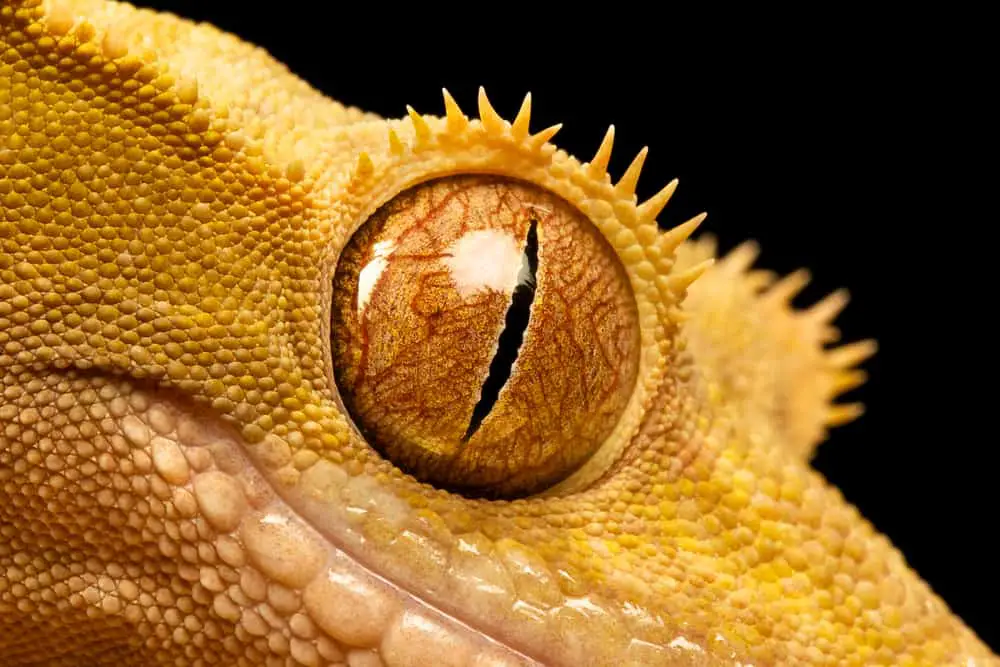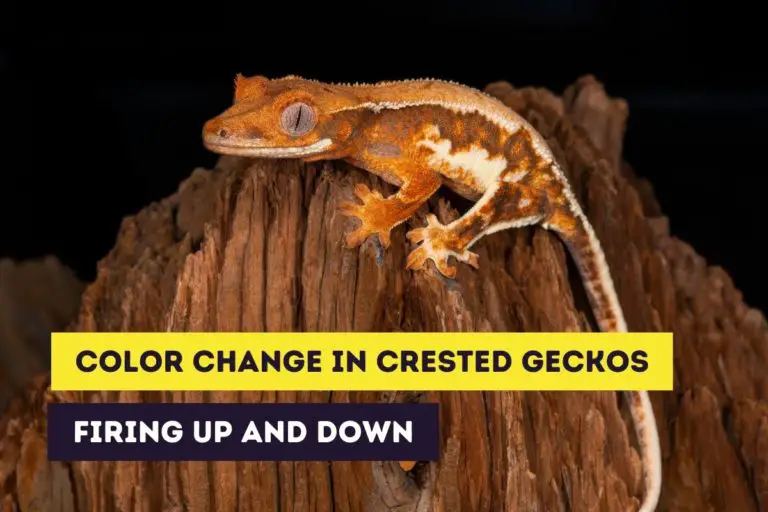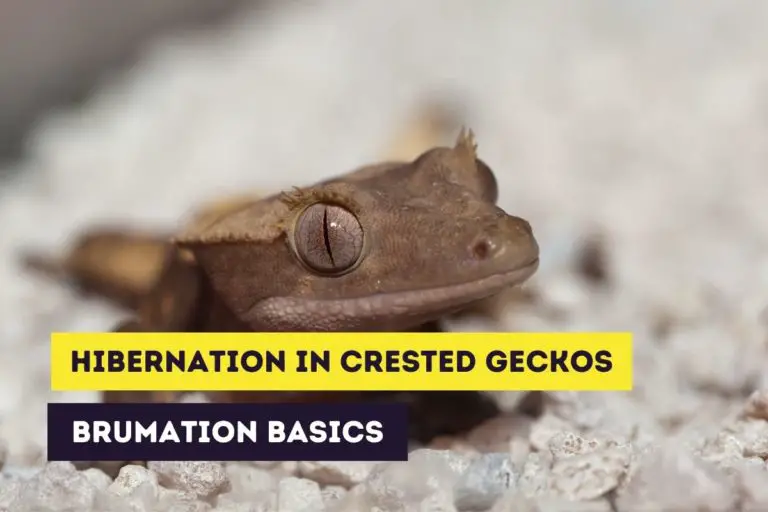Can Crested Geckos See in the Dark and How Well Do They See?
There are a lot of different gecko species and some of them are diurnal while others are nocturnal. The sleeping habits of the gecko will determine whether or not they can see better in the dark or in the light. So what about crested geckos and their ability to see in the dark? Can crested geckos see in the dark?
Crested geckos are nocturnal animals and are adapted to see in the dark and in low-light environments. They can’t see the same colors as we do but have excellent night vision. You should dim the lights at night and create a normal day/night light cycle just as in nature.
Crested geckos have evolved this ability to see in the dark over the course of time. They’ve evolved from lizards that were active during the day and had a good vision during the day but, just as humans do, a bad vision at night. So how do they see so well at night and what do they see?
In this article, you’ll learn about the anatomy of the crested gecko eye, what they can see during the night and what colors they see. You’ll also get some great tips and tricks for creating the perfect environment for your crested gecko during the night.
If you’re interested in stickers or other products of crested geckos, you can always visit our Etsy Shop, which is called Artful Animalia. We currently only send stickers in the United States. If you’re interested in certain crested gecko-related products, don’t hesitate to contact us.
This site contains affiliate links to products we recommend and use ourselves. We may receive a commission for purchases that you make through these links. If you’re interested in learning more about our affiliate links, please visit our (affiliate) disclaimer.
Introduction to the Crested Gecko Eye
How did the eyes of geckos evolve?
As I already mentioned briefly, the crested gecko we know today evolved from diurnal (active during the day) lizards. These diurnal lizards used to have rods and cones in their eyes as photoreceptors that provide vision. The ancestors became more active during the periods of bright light and needed to adapt their vision to these conditions. They gradually lost the rods (which provide vision during dim light and night) and they were left with only the cones as photoreceptors.
At some point, a group of these lizards evolved into the geckos. Most of the geckos were nocturnal and needed a good vision during the night to hunt and explore their territory. But they only had cones as photoreceptors. These cones provide vision during the day and at bright light.
Since the cones were the only thing left as photoreceptors, these cones needed to evolve to provide a good vision for the geckos during the night. This meant that they became larger and more light-sensitive over time.
What does the eye of a crested gecko look like?
Crested geckos have very large eyes that are positioned on each side of the head. They have irises and pupils just as other animals do.
Take a look at the example of a crested gecko eye below.

As you can notice, the pupil is a vertical slit and the irises are orange or rust-colored. They even look a bit like a marble in a sense. The pupil is able to regulate the amount of light that enters into the eye of your crested gecko.
Crested geckos don’t have eyelids but have a transparent membrane instead that protects the eye. So, you won’t see your crested gecko sleeping with their eyes closed.
Ability of Crested Geckos to See in the Dark
Crested geckos are nocturnal (or crepuscular) and use their excellent night vision to hunt and explore their territory.
During the day your crested gecko will sleep and because they don’t have eyelids you’ll see their eyes. The pupils will be vertical small slits because this limits the amount of light that enters the eyes of your crestie.
At nighttime or when exposed to dim light, the pupil will be wider. This allows the crested gecko to see even without a lot of light. In fact, the eyes of geckos are about 350 times more light-sensitive than the eyes of humans.
Unlike humans, crested geckos are able to distinguish colors even at low light. Although no research has been conducted about the color vision of crested geckos at night, we can compare with another nocturnal gecko, the helmet gecko. This gecko has the ability to distinguish blue from grey patterns at a light intensity that’s similar to dim moonlight.
What Colors Do Crested Geckos See?
Little is known about the color vision of crested geckos. No scientific research has been done on the color vision of crested geckos. Like other nocturnal geckos, it’s possible that they have only photopigments (cones) that are sensitive to UV, blue, and green.

It’s a bit hard to imagine what a crested gecko sees because we can’t see ultraviolet light. To give you a kind of idea of what a crested gecko sees, you can find a few images below with a human and a gecko view. These images don’t include the vision of UV light so they should be taken with a grain of salt.

human view 
gecko view 
human view 
gecko view
Tips and Tricks
To give your crested gecko a good sleep during the day and active time during the night, you should follow these tips and tricks:
- don’t place the vivarium in direct sunlight: this will hurt your plants and will overheat the vivarium and your crested gecko.
- allow dim light to enter the room at night: dim light or moonlight will be most natural for your crested geckos. Since cresties don’t need UVB they can be perfectly fine with natural light.
- don’t darken the room during the day: most people will work during the day and will let their crested gecko alone in a home with lights out. However, don’t forget to let some indirect light enter the room so your crestie knows it’s day and needs to sleep.
Related Questions
Do crested geckos need a light at night?
Crested geckos that are fed a well-balanced diet don’t need a special light during the night and can live perfectly fine without a light. You can find special lights that provide light for your crestie during the night. However, these are usually not necessary.
What do crested geckos do at night?
Crested geckos will sleep during the day and will become active during the night. During the night time, they feed, socialize and explore under the safe cover of darkness where they are less visible to potential birds of prey that could swoop down and snatch them away.
Want to Learn More?
If you want to learn more about crested geckos as pets, please read the following articles.
If you’re interested in getting crested geckos as pets you should also definitely read our article about baby and juvenile crested gecko care or (adult) crested gecko care.







